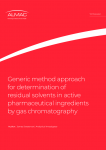Exagen on why AVISE test can end the ‘diagnostic odyssey’

The recently published CAPSTONE Study - the largest ever comparative utility study in lupus diagnostics - leveraged multiple external data sources from hundreds of rheumatologists in comparing diagnosis and treatment outcomes for new patients tested with AVISE Lupus and those tested with tANA methods.
The study demonstrated that AVISE Lupus testing is more clinically effective, both for patients who test positive and those who test negative as compared to the current standard of care.
To learn more about the study’s findings, how the AVISE test can improve the diagnostic odyssey, and what that can mean for the future of lupus—and autoimmune diagnostics, Outsourcing-Pharma (OSP) connected with Dr. Debra Zack, Exagen’s chief medical officer.
OSP: Can you please, in simplest terms, explain the Capstone study?
Dr. Debra Zack (DZ): The study (full name “Complement Activation Products vs. Standard ANA Testing: Treatment Outcomes, Diagnosis & Economic Impact in Lupus'') focused on directly comparing the AVISE lupus test, which incorporates our novel cell-bound complement activation product technology alongside conventional autoantibodies measured as part of the workup for lupus, to a more standard, antiquated approach of looking at tANA in combination with extractable nuclear antigen autoantibodies. Comparing the two groups directly, the goals for the main outcomes were as follows:
- How much more likely are patients diagnosed with lupus if they are AVISE positive compared to testing positive by the conventional approach?
- How likely are they to start one or more medications associated with lupus treatment if they are AVISE positive vs positive with a conventional approach?
- What is the impact of AVISE testing on the downstream care of these patients, specifically the economic impact?
OSP: Looking further into the Capstone study, your team mentions a goal to “improve the diagnostic odyssey”. Can you please explain the concept and how it relates to the state of the diagnostics space today?
DZ: Like the story of the odyssey, many patients find themselves on a long winding journey through multiple providers, undergoing multiple rounds of testing only to find themselves back where they began. They have no additional clarity or conclusions for what leads to these symptoms that affect their lives.
The results of the study prove that the AVISE test, both for those who test positive and those who test negative, is more effective than tANA testing in ending the diagnostic odyssey.
OSP: Could you please break down how you determined the patients and physicians involved in this study? In addition, how long was the follow-up for patients after testing?
We leveraged a large, integrated electronic health record registry, pulling EHR data from over 300 rheumatologists across the United States. Our goal was to provide a cross-section of different rheumatologists' perspectives and include any biases/individual characteristics in the study.
We went through inclusion/exclusion criteria to identify the right set of patients to include. For the main cohort, we started with approximately 23,000 patients tested with the tANA approach and approximately 22,000 with AVISE. For the new patient cohort, we looked at the same outcomes in the subset of patients newly referred (new consultation code in EHR within 12 months of being tested), and in that group there were approximately 9,000 AVISE tested patients and 18,000 tANA tests.
This group was chosen because these patients are aligned with the intended use of the test (relatively newly referred patients undergoing diagnostic testing due to clinical suspicion of lupus). For the most part, when we compared results, the findings were generally stronger in the new patient cohort than in the main cohort. That tells us that, when the test is used in the appropriate intended use context, it leads to the intended effect – a sooner, more accurate diagnosis and therefore a reduced overall cost of repeat testing and reduced need for additional healthcare resources (especially when a patient tests negative).
OSP: Why is it that up to this point it's been so hard to achieve this level of sensitivity and accuracy the AVISE testing can accomplish?
DZ: The IP-protected elements and algorithms within the AVISE testing allow us to achieve a balance of sensitivity and specificity. With regards to this level of testing and this volume, we can’t enlist 300 providers very easily, but the electronic records mechanism allows us to look at results over time and with more physician sites involved. To help clarify, if we were to physically go to 20 study sites with 20 tests each, there’s still far less depth of data than in the electronic records which provides 20,000 tests amongst a cross-sectional group of providers. The electronic records really provide the statistics one would want to show.
OSP: What is the impact this test has on insurance payers and providers?
DZ: In diagnostics, it’s our responsibility as providers to prove that the technology is not only accurate in differentiating lupus from other diseases, but also provides a positive impact when used appropriately. The heart of the study is to demonstrate the clinical utility of the test – meaning rather than looking at performance in the controlled research setting, we look at how the test performs in a broad set of different rheumatologists across the US. And from there, we look to see that the test has a net positive impact along multiple dimensions. This is the type of information in diagnostic technology that payers are looking for coverage and inclusion in their networks.
It can be a challenging process because payers want to look at their tests based on value. They need to ensure that if a new test comes along, and that test may introduce a new cost to the healthcare system, the patients end up with better outcomes. With better patient outcomes, the payer/network will end up with healthier individuals overall and cost savings for everyone. The use of AVISE lupus also reduced the repeat testing seen in the tANA arm significantly, again a cost savings to the health care system. The evidence demonstrates at a grand scale that the AVISE test delivers and solidifies the value of AVISE Lupus to the individual and the healthcare system.
OSP: In conjunction, what is the biggest benefit of AVISE testing for patients?
DZ: Really, it’s the lack of having to do things over and over again. Repeat testing was 3.5 times more common with patients who first tested with tANA testing. These patients are trapped in an endless loop of the diagnostic odyssey because providers were unconvinced by the initial results they received, likely due to a lack of confidence in the original testing. The CAPSTONE findings present a proven alternative for physicians to get to the diagnosis sooner for the benefit of the patient.













